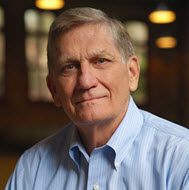Think of reactive depression as a maladaptive response to a specific external event or events. More formally from a DSM perspective, this is an Adjustment Disorder with Depressed Mood. Typical examples are difficulty adjusting to a recent divorce, being downsized from a job or the loss of a cherished loved one. Also, there are no measurably significant changes in physical functioning such as sleep patterns or appetite and energy levels with this depression type.
 Psychotherapy is the modality of choice for treating reactive depression and any of today’s widely accepted models – traditional, cognitive-behavioral; Dialectical-behavioral; Motivational interviewing; Mindfulness – are quite suitable choices. Work from the position that the client is NOT damaged by directing your efforts toward building on client strengths – instead of shoring up weaknesses. Faulty thinking = ill feeling = faulty behavior = faulty outcomes is the scenario that has to change for the client to move productively forward.
Psychotherapy is the modality of choice for treating reactive depression and any of today’s widely accepted models – traditional, cognitive-behavioral; Dialectical-behavioral; Motivational interviewing; Mindfulness – are quite suitable choices. Work from the position that the client is NOT damaged by directing your efforts toward building on client strengths – instead of shoring up weaknesses. Faulty thinking = ill feeling = faulty behavior = faulty outcomes is the scenario that has to change for the client to move productively forward.
What Else Works
- We are and our mood is what we eat
- Need I extol the virtues of exercise?
- Spiritual and religious/faith-based interventions: In credible study after study, “believers” scored higher on happiness and contentment scales than “non- believers.”
What Doesn’t Work
Medication, antidepressants in particular. Why? Because antidepressants target biological deficits; these drugs don’t change the faulty belief systems and behavior that are characteristic of reactive depression. Antidepressants are not indicated for psychosocial distress and their use in such instances is akin to utilizing antibiotics for viral-type infections. Overuse = future resistance. Eighty percent of antidepressant prescriptions are written nowadays by primary care physicians with insufficient training and way too little time (in seven-minute office visits) to properly assess for the array of often non-descript and ill-defined symptoms that patients offer up. Such symptoms (feeling “down,” random aches and pains, gastrointestinal distress, malaise) are often not occurring on most days within the two-week threshold that defines a diagnosis of any type of depression in the first place.
Also prescribers and patients alike are increasingly influenced by saturation drug marketing. Patients want pills, expect to leave a prescriber’s office with a prescription, and usually do. Antidepressant users then often succumb to “antidepressant overreach” by taking the drugs too long and then wind up wondering why they’ve stopped working as they once did.
Long-term use of antidepressants for reactive depression is a lot like a failing relationship – the thrill is gone but it’s too painful to move on, leaving the user between the proverbial rock and a hard place; which is, although the medication is no longer meeting desired wants and needs, the thought of experiencing withdrawal symptoms is even more intolerable.
Those intent on using antidepressants to help ameliorate the distress and pain associated with reactive, psychosocial-type events should think in terms of months of use, which is typically long enough for a distressing circumstance to reach its natural conclusion.




